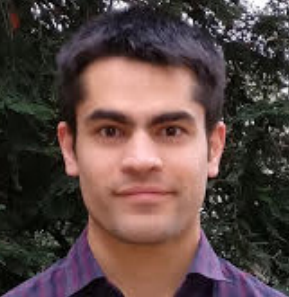
PATRICK GALLAGHER
PATRICK GALLAGHER received his PhD from Stanford in 2017 and is now a postdoctoral fellow at the Kavli Energy Nanoscience Institute at UC Berkeley. He studies two-dimensional systems of electrons, which can form on surfaces, at interfaces, or in atomically thin materials. Patrick’s work has most recently focused on graphene, but past work has involved electron systems in strontium titanate and gallium arsenide. Experimental techniques include terahertz spectroscopy, optical spectroscopy, electrical measurement, and scanning probe microscopy
“I'VE FOUND THE PARK XE-100 TO BE A VERSATILE AND CONVENIENT PLATFORM FOR AFM AND STM. ITS LOW VERTICAL VIBRATION WAS PARTICULARLY USEFUL FOR MY STUDY OF SELF-ASSEMBLY ON GRAPHENE, AS THE MEASURED TOPOGRAPHIC VARIATION OF INTEREST WAS OFTEN LESS THAN 1 ANGSTROM.”
Self-assembly of environmental adsorbates on graphene and other 2D materials Abstract:
Graphene sheets on atomically flat substrates are expected to be flat. Yet recent studies of nominally flat graphene using high-resolution atomic force microscopy have revealed an apparently corrugated surface: topography scans show large-scale periodic struc! tures of stripes whose period is 4 nm and whose amplitude is less than a nanometer. I will present scanning probe and optical measurements that show that these stripes are self-assembled environmental adsorbates, the chemical identity of which is still under study. This self-assembly appears to be common on 2D materials, as the same phenomenon occurs on hexagonal boron nitride sheets, and 4 nm-periodic stripes were recently observed on molybdenum disulfide by another group. I will discuss the impact of the self-assembled stripes on the frictional, optical, and electronic properties of graphene samples.
References: P. Gallagher et al. Nature Commun. 7, 10745 (2016). P. Gallagher et al. in prep (2016).




